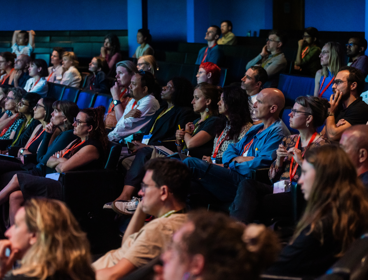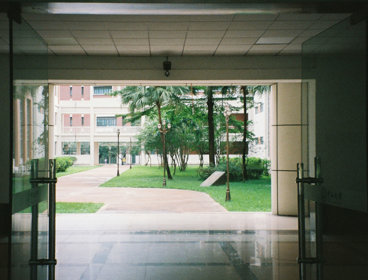Each month we are spotlighting recently published research from one of the Society’s leading international journals: Area, The Geographical Journal, Transactions of the Institute of British Geographers, and Geo: Geography and Environment. Here is a piece from Transactions, exploring the shifting aid landscape in the Caribbean.
You may have heard of China’s Belt and Road Initiative, a development project that spans 150 countries around the world. This project is emblematic of the global rise in South-South partnerships. But how is South-South aid experienced and understood by people in aid-recipient countries?
Through research funded by the Society, geographer Dr Gemma Sou and her colleague Dr Jennifer Day explored how senior civil servants in Antigua and Barbuda perceive, experience, and negotiate aid partnerships with China. Their paper contributes towards a deeper understanding of the contemporary aid landscape in which new donors outside of the ‘Global North’ are emerging. We spoke to Gemma Sou to find out more about the research.
Geographers and a changing aid landscape
Across the world, South-South co-operation is increasing, with China a key donor. Geographers are well-placed to examine how these aid partnerships are experienced at multiple scales, from the national to the local, and across diverse contexts.
In 2020, Gemma travelled to Antigua and Barbuda. Originally wanting to explore how senior civil servants negotiated the design and delivery of aid with Global North donors, when Gemma arrived and started to conduct her research, her plans changed.
When I got there, a lot of the civil servants said to me, ‘You’re asking the wrong question'.Dr Gemma Sou
She found that many civil servants repeatedly brought up their experiences working in aid partnerships with China, and so decided to shift the focus of her research, drawing on Jennifer Day’s experience researching Chinese aid in the Pacific.
Much of the research on South-South partnerships in disciplines such as International Relations, Security Studies, and Diplomacy Studies has focused on high-level negotiations. Geographers, however, are interested in gaining a deeper understanding of how these South-South partnerships are negotiated at scales below the international. Gemma and Jennifer’s research therefore focused on the experiences and perceptions of the civil servants whose daily responsibilities involve the design, delivery and evaluation of aid at the ‘middle’ of the global aid infrastructure.
It’s important to understand how these people in the middle think. How do they perceive ‘southern’ aid? Because they are involved in mediating and negotiating this aid.Dr Gemma Sou
In researching the ‘middle’, Gemma and Jennifer expanded understandings of South-South aid, illuminating the day-to-day realities of the contemporary development landscape as it is experienced in postcolonial societies.
Postcolonial experiences of South-South aid
Civil servants in Antigua and Barbuda perceive that Global North donors have largely failed to reduce poverty in their country. They view China as an attractive donor because it takes an alternative approach to development that they suggest may be more effective in their country. The civil servants also understand that South-South aid partnerships give their country greater control over their development futures. In this way, Chinese partnerships are generally perceived as a positive progression from the paternalistic control of Global North donors. These perceptions reflect some of the earlier radical optimism about South-South cooperation that originally emerged in the 1970s.
Civil servants perceive that ‘Global North’ approaches to development have failed to reduce poverty, and they’re weary about the control over centuries by western powers. They perceive that Chinese aid is an attractive alternative that allows them to take back some control over their development futures.Dr Gemma Sou
However, Chinese aid is not passively accepted as positive. Civil servants are aware of China’s pursuit of geopolitical power and potentially negative impacts on the environment from Chinese approaches to aid projects. On the other hand, they also perceive that western critiques of Chinese aid are underpinned by a form of ‘Orientalism’, attempting to undermine the rise of China as a key player in international aid.
Gemma and Jennifer’s paper demonstrates that postcolonial elites in aid-recipient nations no longer view Global North donors as the indisputable architects of development. For those negotiating and implementing aid, the development landscape has shifted, opening alternative development futures away from the Global North. Whilst these futures may not be without problems, they are currently understood as futures in which postcolonial states will have greater control.
Next steps
This project is just one example of Gemma’s research. She is currently researching human experiences of heatwaves in the UK, focusing on the city of Manchester. Through this, she seeks to understand how austerity has impacted people’s ability to adapt to extreme heat during their everyday lives.
In the future, Gemma and Jennnifer aim to compare experiences of South-South aid in postcolonial contexts of both the Pacific and the Caribbean. Read their recently published paper and find out more about this research here.
This research spotlight article was written by Safia Bailey (Cardiff University).



